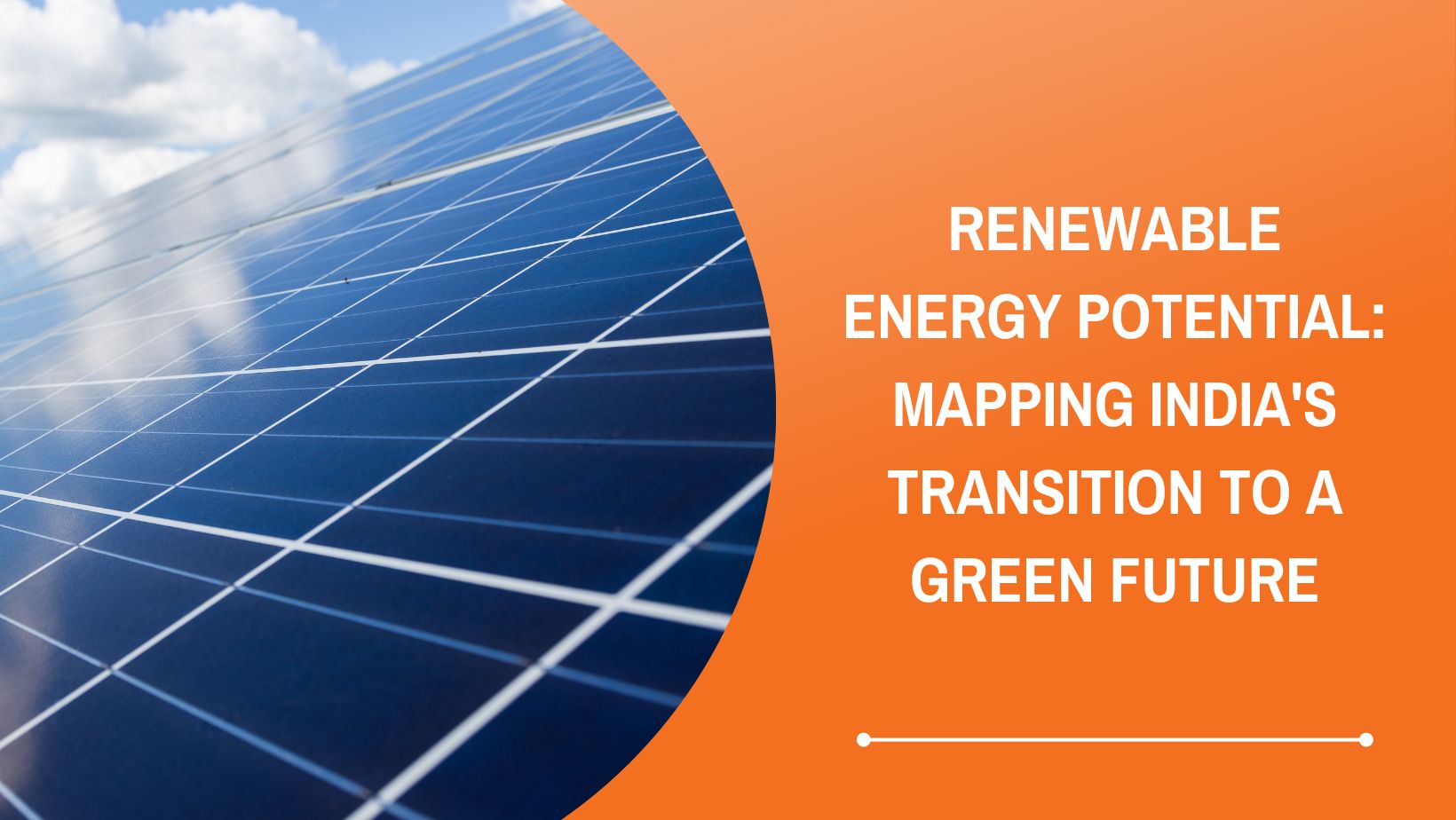Solar Energy Storage Solutions: Overcoming the Challenge of Intermittency
In the realm of renewable energy, solar power stands out as a frontrunner in the race towards sustainability. Its abundant availability and eco-friendly nature make it a promising alternative to conventional fossil fuels. However, one significant hurdle hindering its widespread adoption has been intermittency – the sun doesn't shine consistently, and solar panels can't generate electricity at night or during cloudy weather. But as the world shifts towards a cleaner energy future, innovative solutions in solar energy storage are emerging, promising to overcome this challenge and unlock the full potential of solar power.
The Rise of Solar Power:
Solar energy, derived from the sun's radiation, is harnessed through photovoltaic (PV) panels or concentrated solar power (CSP) systems. These technologies have witnessed remarkable advancements in efficiency and cost-effectiveness, driving a surge in solar installations worldwide. From rooftop solar arrays on residential homes to utility-scale solar farms spanning vast expanses of land, solar power is revolutionizing the way we generate electricity.
However, the intermittent nature of solar energy poses a significant obstacle to its seamless integration into the power grid. When the sun sets or is obscured by clouds, solar panels cease to produce electricity, leading to fluctuations in power output. This intermittency challenges grid stability and reliability, requiring backup power sources or energy storage solutions to fill the gaps and ensure a steady supply of electricity.
Enter Solar Energy Storage:
To address the intermittency of solar power, energy storage systems have emerged as a crucial component of the renewable energy infrastructure. These systems store excess energy generated during peak sunlight hours for later use when solar production is low or non-existent. Among various energy storage technologies, batteries have emerged as a frontrunner due to their versatility, scalability, and declining costs.
Lithium-ion batteries, commonly used in electric vehicles and consumer electronics, have become the go-to choice for solar energy storage applications. These batteries can store surplus solar energy efficiently and discharge it when needed, smoothing out the peaks and valleys of solar power generation. As a result, solar energy storage systems equipped with lithium-ion batteries can enhance grid stability, reduce reliance on fossil fuels, and maximize the utilization of renewable energy resources.
Utility-Scale Solar and Energy Storage:
In the realm of utility-scale solar, where vast solar farms generate electricity for entire communities or regions, energy storage plays a pivotal role in maximizing the value of solar investments. By coupling solar power plants with large-scale battery storage systems, developers can capture excess solar energy during the day and dispatch it during periods of high demand or when solar production is low.
Sustainable Energy Solutions Companies Leading the Way:
Sustainable energy solutions companies are at the forefront of innovation in solar energy storage, developing cutting-edge technologies and deploying integrated systems that combine solar power generation with energy storage capabilities. These companies leverage advancements in battery technology, grid management software, and predictive analytics to optimize the performance and efficiency of solar energy systems.
Furthermore, these companies are exploring novel approaches such as hybrid renewable energy systems, combining solar power with other renewable sources like wind or hydroelectric power, to further enhance energy reliability and resilience.
The Road Ahead:
As solar energy continues to play an increasingly prominent role in the global energy mix, overcoming the challenge of intermittency remains paramount. With ongoing advancements in solar energy storage technologies and the growing collaboration between industry stakeholders, the vision of a renewable energy future powered by the sun is becoming increasingly attainable.
In conclusion, solar energy storage solutions are revolutionizing the way we harness and utilize solar power, paving the way for a cleaner, more sustainable energy future. By overcoming the challenge of intermittency, these solutions are unlocking the full potential of solar energy and driving the transition towards a renewable energy-powered world.
For more information visit us @ https://www.azurepower.com/
People
Circles
Posts
Is Solar Power Right for You: Illuminating Your Path to a Sustainable Future
The world is undergoing a massive energy transition, with a growing emphasis on renewable energy sources like solar power. Solar panels have become increasingly popular for homeowners, but is this clean energy solution right for you? Let's explore the factors to consider and shed some light on how solar can benefit your wallet and the planet.
The Allure of Solar Power
Solar energy is a clean and abundant renewable resource. Unlike fossil fuels, it doesn't produce harmful emissions, contributing to a cleaner environment and a healthier planet. By installing solar panels on your rooftop, you can generate your own electricity, reducing dependence on traditional utility companies and potentially lowering your monthly bills.
Factors to Consider Before Going Solar
While solar offers significant advantages, it's not a one-size-fits-all solution. Here are some key factors to consider:
Sun Exposure: Your home's roof needs to receive ample sunlight throughout the day. Shady areas or buildings blocking the sun can significantly impact the efficiency of your solar panels.
Roof Suitability: The type, size, and angle of your roof play a crucial role. Solar panels work best on south-facing, unshaded roofs with a good tilt angle for optimal sun exposure.
Electricity Usage: Consider your average monthly electricity consumption. A solar power system sized to meet your energy needs will maximize its benefits.
Financial Investment: The upfront cost of installing solar panels can be significant. However, there are government incentives, tax credits, and financing options from renewable energy companies to help ease the initial investment. The long-term savings on your electricity bills can outweigh the initial cost.
Beyond the Rooftop Revolution
The benefits of solar power extend far beyond individual homes. Utility-scale solar farms, developed by renewable energy companies, generate clean electricity for entire communities. These large-scale installations play a vital role in accelerating the energy transition and reducing reliance on fossil fuels.
Making the Switch
If you're interested in solar power, research local renewable energy companies that offer solar panel installation and financing options. They can conduct a site assessment to determine if your home is suitable for solar and design a system that meets your energy needs.
Illuminating a Brighter Future
Solar power offers a unique opportunity to contribute to a sustainable future. By generating clean energy and reducing dependence on fossil fuels, you can make a positive impact on the environment while potentially saving money on your electricity bills. So, is solar power right for you? By carefully considering the factors above and exploring the available options, you can make an informed decision and illuminate your path towards a brighter, more sustainable future.
For more information visit us @ https://www.azurepower.com/
⚠️ ‘Zombie’ Symptoms Linked to CO2 Pipeline Leaks, But Big Energy Planning 96,000-Mile Expansion
“This entire strategy is being represented as a climate solution when most of the time it’s really not. Most of the time it’s really part of the climate problem.” — Rep. Jared Huffman (D-Calif.)
⬇️
https://childrenshealthdefense.org/defender/zombie-symptoms-co2-pipeline-leaks-fossil-fuel-industry-expansion/?utm_source=sovren&utm_medium=social&utm_campaign=defender&utm_id=20240429

Driven by federal tax incentives for carbon-reduction projects, the fossil fuel industry plans to construct a 96,000-mile network of carbon dioxide pipelines across the U.S., despite leaks, including one that sent nearly 50 people in a Mississippi town to the hospital with “zombie”-like symptoms.
childrenshealthdefense.org
Videos
Order THE CRASH COURSE here:
https://www.barnesandnoble.com/w/the-crash-course-chris-martenson/1142015889?ean=9781394168866
Wanna buy me a coffee? https://www.buymeacoffee.com/PeakProsperity
Join the #1 resilience community today!
https://peakprosperity.com/membership/
ALSO FOLLOW US HERE:
Twitter: @Chris_martenson
https://sovren.media/u/cmartenson/
https://odysee.com/@Chris_Martenson:2
https://rumble.com/c/PeakProsperity
In this episode of the Cost of Everything, we examine the cost of building, maintaining and producing nuclear energy. Host Christy Ai weighs the pros and cons of relying on nuclear energy and how the West is falling behind on taking advantage of this source of energy. International relations professor Joshua Goldstein explains what the current state of the global nuclear power industry is, and whether or not it is a viable alternative to fossil fuels.
People
Circles
Videos
Order THE CRASH COURSE here:
https://www.barnesandnoble.com/w/the-crash-course-chris-martenson/1142015889?ean=9781394168866
Wanna buy me a coffee? https://www.buymeacoffee.com/PeakProsperity
Join the #1 resilience community today!
https://peakprosperity.com/membership/
ALSO FOLLOW US HERE:
Twitter: @Chris_martenson
https://sovren.media/u/cmartenson/
https://odysee.com/@Chris_Martenson:2
https://rumble.com/c/PeakProsperity
In this episode of the Cost of Everything, we examine the cost of building, maintaining and producing nuclear energy. Host Christy Ai weighs the pros and cons of relying on nuclear energy and how the West is falling behind on taking advantage of this source of energy. International relations professor Joshua Goldstein explains what the current state of the global nuclear power industry is, and whether or not it is a viable alternative to fossil fuels.
Posts
Solar Energy Storage Solutions: Overcoming the Challenge of Intermittency
In the realm of renewable energy, solar power stands out as a frontrunner in the race towards sustainability. Its abundant availability and eco-friendly nature make it a promising alternative to conventional fossil fuels. However, one significant hurdle hindering its widespread adoption has been intermittency – the sun doesn't shine consistently, and solar panels can't generate electricity at night or during cloudy weather. But as the world shifts towards a cleaner energy future, innovative solutions in solar energy storage are emerging, promising to overcome this challenge and unlock the full potential of solar power.
The Rise of Solar Power:
Solar energy, derived from the sun's radiation, is harnessed through photovoltaic (PV) panels or concentrated solar power (CSP) systems. These technologies have witnessed remarkable advancements in efficiency and cost-effectiveness, driving a surge in solar installations worldwide. From rooftop solar arrays on residential homes to utility-scale solar farms spanning vast expanses of land, solar power is revolutionizing the way we generate electricity.
However, the intermittent nature of solar energy poses a significant obstacle to its seamless integration into the power grid. When the sun sets or is obscured by clouds, solar panels cease to produce electricity, leading to fluctuations in power output. This intermittency challenges grid stability and reliability, requiring backup power sources or energy storage solutions to fill the gaps and ensure a steady supply of electricity.
Enter Solar Energy Storage:
To address the intermittency of solar power, energy storage systems have emerged as a crucial component of the renewable energy infrastructure. These systems store excess energy generated during peak sunlight hours for later use when solar production is low or non-existent. Among various energy storage technologies, batteries have emerged as a frontrunner due to their versatility, scalability, and declining costs.
Lithium-ion batteries, commonly used in electric vehicles and consumer electronics, have become the go-to choice for solar energy storage applications. These batteries can store surplus solar energy efficiently and discharge it when needed, smoothing out the peaks and valleys of solar power generation. As a result, solar energy storage systems equipped with lithium-ion batteries can enhance grid stability, reduce reliance on fossil fuels, and maximize the utilization of renewable energy resources.
Utility-Scale Solar and Energy Storage:
In the realm of utility-scale solar, where vast solar farms generate electricity for entire communities or regions, energy storage plays a pivotal role in maximizing the value of solar investments. By coupling solar power plants with large-scale battery storage systems, developers can capture excess solar energy during the day and dispatch it during periods of high demand or when solar production is low.
Sustainable Energy Solutions Companies Leading the Way:
Sustainable energy solutions companies are at the forefront of innovation in solar energy storage, developing cutting-edge technologies and deploying integrated systems that combine solar power generation with energy storage capabilities. These companies leverage advancements in battery technology, grid management software, and predictive analytics to optimize the performance and efficiency of solar energy systems.
Furthermore, these companies are exploring novel approaches such as hybrid renewable energy systems, combining solar power with other renewable sources like wind or hydroelectric power, to further enhance energy reliability and resilience.
The Road Ahead:
As solar energy continues to play an increasingly prominent role in the global energy mix, overcoming the challenge of intermittency remains paramount. With ongoing advancements in solar energy storage technologies and the growing collaboration between industry stakeholders, the vision of a renewable energy future powered by the sun is becoming increasingly attainable.
In conclusion, solar energy storage solutions are revolutionizing the way we harness and utilize solar power, paving the way for a cleaner, more sustainable energy future. By overcoming the challenge of intermittency, these solutions are unlocking the full potential of solar energy and driving the transition towards a renewable energy-powered world.
For more information visit us @ https://www.azurepower.com/
Is Solar Power Right for You: Illuminating Your Path to a Sustainable Future
The world is undergoing a massive energy transition, with a growing emphasis on renewable energy sources like solar power. Solar panels have become increasingly popular for homeowners, but is this clean energy solution right for you? Let's explore the factors to consider and shed some light on how solar can benefit your wallet and the planet.
The Allure of Solar Power
Solar energy is a clean and abundant renewable resource. Unlike fossil fuels, it doesn't produce harmful emissions, contributing to a cleaner environment and a healthier planet. By installing solar panels on your rooftop, you can generate your own electricity, reducing dependence on traditional utility companies and potentially lowering your monthly bills.
Factors to Consider Before Going Solar
While solar offers significant advantages, it's not a one-size-fits-all solution. Here are some key factors to consider:
Sun Exposure: Your home's roof needs to receive ample sunlight throughout the day. Shady areas or buildings blocking the sun can significantly impact the efficiency of your solar panels.
Roof Suitability: The type, size, and angle of your roof play a crucial role. Solar panels work best on south-facing, unshaded roofs with a good tilt angle for optimal sun exposure.
Electricity Usage: Consider your average monthly electricity consumption. A solar power system sized to meet your energy needs will maximize its benefits.
Financial Investment: The upfront cost of installing solar panels can be significant. However, there are government incentives, tax credits, and financing options from renewable energy companies to help ease the initial investment. The long-term savings on your electricity bills can outweigh the initial cost.
Beyond the Rooftop Revolution
The benefits of solar power extend far beyond individual homes. Utility-scale solar farms, developed by renewable energy companies, generate clean electricity for entire communities. These large-scale installations play a vital role in accelerating the energy transition and reducing reliance on fossil fuels.
Making the Switch
If you're interested in solar power, research local renewable energy companies that offer solar panel installation and financing options. They can conduct a site assessment to determine if your home is suitable for solar and design a system that meets your energy needs.
Illuminating a Brighter Future
Solar power offers a unique opportunity to contribute to a sustainable future. By generating clean energy and reducing dependence on fossil fuels, you can make a positive impact on the environment while potentially saving money on your electricity bills. So, is solar power right for you? By carefully considering the factors above and exploring the available options, you can make an informed decision and illuminate your path towards a brighter, more sustainable future.
For more information visit us @ https://www.azurepower.com/
⚠️ ‘Zombie’ Symptoms Linked to CO2 Pipeline Leaks, But Big Energy Planning 96,000-Mile Expansion
“This entire strategy is being represented as a climate solution when most of the time it’s really not. Most of the time it’s really part of the climate problem.” — Rep. Jared Huffman (D-Calif.)
⬇️
https://childrenshealthdefense.org/defender/zombie-symptoms-co2-pipeline-leaks-fossil-fuel-industry-expansion/?utm_source=sovren&utm_medium=social&utm_campaign=defender&utm_id=20240429

Driven by federal tax incentives for carbon-reduction projects, the fossil fuel industry plans to construct a 96,000-mile network of carbon dioxide pipelines across the U.S., despite leaks, including one that sent nearly 50 people in a Mississippi town to the hospital with “zombie”-like symptoms.
childrenshealthdefense.org
Renewable Energy Potential: Mapping India's Transition to a Green Future
India stands at a crucial juncture in its quest for sustainable development, marked by a significant shift towards renewable energy sources. With the pressing need to mitigate climate change and reduce dependence on fossil fuels, the country is increasingly turning to solar energy and other renewables to power its future. This transition is not merely about embracing cleaner sources of energy; it represents a fundamental restructuring of India's energy landscape, with far-reaching implications for its economy, environment, and society.
Embracing Solar Power:
Solar energy has emerged as a cornerstone of India's renewable energy strategy. Blessed with abundant sunlight throughout the year, India possesses immense solar energy potential, making it an ideal candidate for large-scale solar power generation. The government's ambitious targets, such as achieving 100 GW of solar capacity by 2022 and 450 GW by 2030, underscore its commitment to harnessing this abundant resource.
One of the most notable successes in India's solar journey has been the dramatic reduction in solar tariffs. Through competitive bidding processes and technological advancements, the cost of solar power has plummeted, making it increasingly competitive with conventional sources of energy. This cost competitiveness has not only accelerated the deployment of solar projects but has also made solar energy accessible to a wider range of consumers, including industries, commercial establishments, and households.
Beyond Solar: Diversifying the Renewable Portfolio:
While solar energy dominates discussions around India's renewable energy transition, other sources such as wind, hydro, biomass, and geothermal also play crucial roles. Wind energy, in particular, has witnessed significant growth, with India emerging as one of the world's top wind energy producers. Similarly, the untapped potential of hydroelectric power, particularly in regions like the Himalayas, presents opportunities for further expansion.
Moreover, advancements in technology and innovation are opening up new frontiers in renewable energy. From offshore wind farms to floating solar installations and innovations in energy storage, these developments are enriching India's renewable energy portfolio and enhancing its resilience against variability in weather conditions.
Policy Support and Regulatory Framework:
The success of India's energy transition hinges upon a conducive policy environment and robust regulatory frameworks. The government's flagship initiatives, such as the National Solar Mission, the Green Energy Corridor Project, and various state-level policies, provide the necessary impetus for renewable energy deployment. Furthermore, measures such as renewable purchase obligations, net metering, and fiscal incentives are incentivizing investments in clean energy projects.
However, challenges persist, including land acquisition issues, grid integration constraints, and financing hurdles. Addressing these challenges requires a coordinated effort from policymakers, industry stakeholders, and civil society to streamline processes, enhance grid infrastructure, and mobilize investments.
Socioeconomic Impacts and Opportunities:
India's transition to renewable energy is not only about reducing carbon emissions; it also holds immense socioeconomic potential. The renewable energy sector is a significant driver of job creation, offering employment opportunities across the value chain, from manufacturing and installation to operations and maintenance. Moreover, decentralized renewable energy solutions have the potential to empower rural communities by providing access to clean, reliable, and affordable energy.
Furthermore, by reducing dependence on imported fossil fuels, India's renewable energy push enhances energy security and reduces the nation's vulnerability to global energy price fluctuations. This, in turn, strengthens India's economic resilience and fosters sustainable growth.
Conclusion:
India's journey towards a green future powered by renewable energy is both promising and challenging. While significant progress has been made, much work lies ahead to realize the full potential of renewables and achieve the nation's energy transition goals. Collaboration among government, industry, academia, and civil society will be key to overcoming barriers, driving innovation, and accelerating the adoption of clean energy technologies. With steadfast commitment and collective action, India can pave the way for a sustainable, inclusive, and prosperous future powered by renewable energy.
For more information visit us @ https://www.azurepower.com/energy-transition
⚠️ World on Track to Dump 220 Million Tons of Plastic Waste This Year
“The question for every government now is this — will you negotiate a treaty to protect the health of your people; or will you negotiate a treaty to protect the profits of the fossil fuel industry?" — Sian Sutherland, A Plastic Planet
⬇️
https://childrenshealthdefense.org/defender/world-220-million-tons-plastic-waste-cd/?utm_source=sovren&utm_medium=social&utm_campaign=defender&utm_id=20240415










